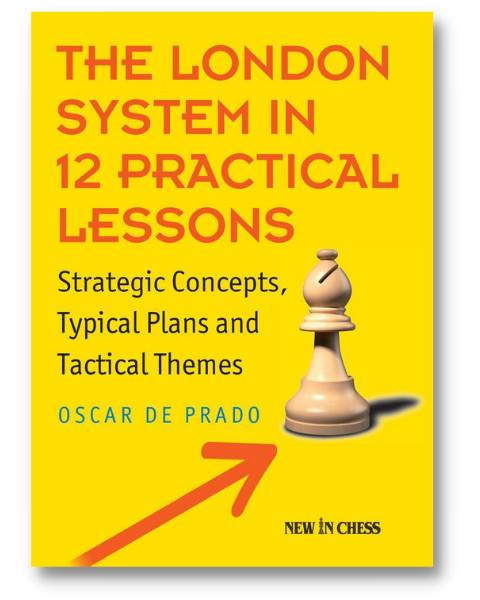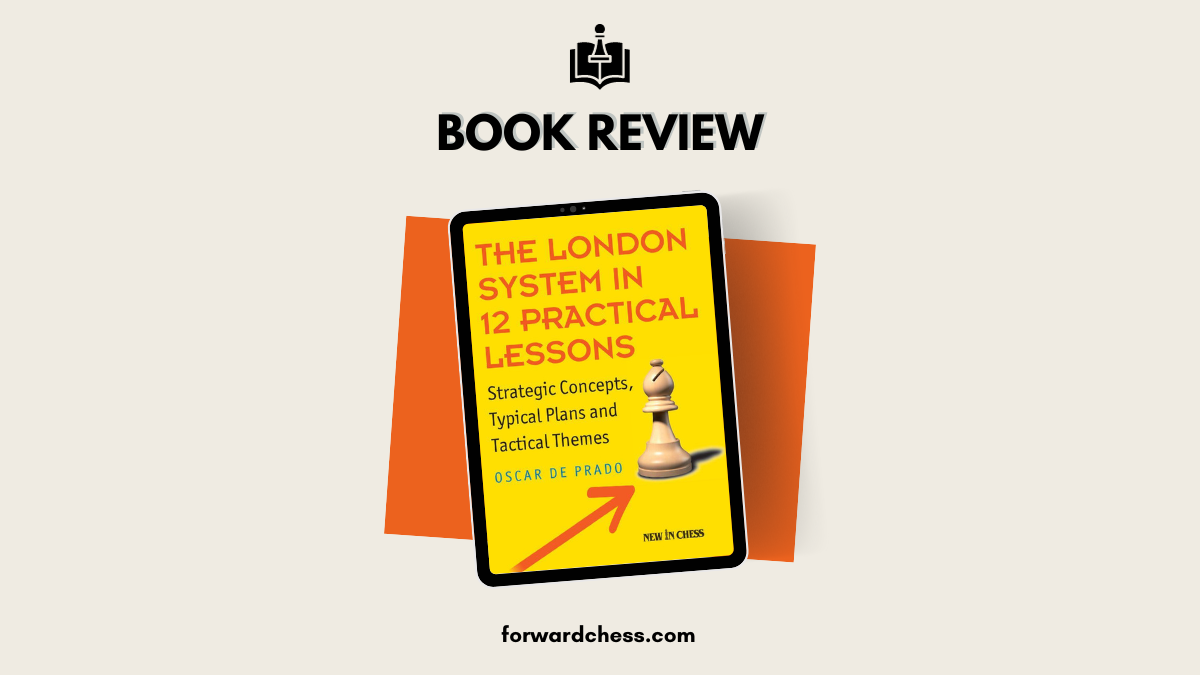Review of The London System in 12 Practical Lessons
“[The London System] is not a frequent guest in games at the highest level…yet anyone not aspiring to world championship level may rest assured that 3.Bf4 [after 1.d4 d5 2.Nf3 Nf6] is a perfectly useful move.”
– GM Paul van der Sterren in his book FCO: Fundamental Chess Openings, 2009.
Times have changed since van der Sterren wrote the above quote. In the past, the London System used to be considered a safe but somewhat dull opening, with GM Gata Kamsky being the most regular and strongest exponent of the opening. Nowadays, it is a frequent guest at the top levels of chess, with Magnus Carlsen being amongst its supporters. The other thing that has changed recently is the adoption of the move order 1.d4 and 2.Bf4 rather than 1.d4, 2.Nf3 and 3.Bf4. As van der Sterren also noted, the opening is also very popular at the amateur level, as it is an example of an easy-to-learn systems opening.

The author of the book, The London System in 12 Practical Lessons, FM Oscar de Prado, was a co-author of a previous book on the London System, The Agile London System, 2016, and there are frequent references to the previous book in the current book. He describes the relationship between the two books as follows.
“In this book we are going to look at the London System from a more practical viewpoint, focusing on the needs of amateur players, in contrast to my previous book The Agile London System, which was a much more theoretical work and tried to cover all possible options. To be clear, the present book is neither a theoretical manual on the London System nor simply an update to the previous book, although the latest novelties and the currently critical lines are analysed. This is essentially a new book, focusing on the specific themes that arise in this opening and with an explanation of the most important plans and ideas.
The aim is to help the amateur player to understand the London System and play it correctly and easily.”
As mentioned above, the author recommends the move order 1.d4 and 2.Bf4. His reasons for this are as follows.
“This is the precise order that we recommend, developing the bishop to f4 instead of playing 2.Nf3. Bringing the bishop out first has several advantages, mainly in connection with Black’s ideas of playing …c7-c5 and …Qb6. In many variations that Black can choose it makes no difference, but in the lines where Black mounts quick pressure against b2 with the moves …c7-c5, …Nc6, …Qb6 it’s preferable to postpone Nf3 in favor of developing the queenside.”
Accordingly, the recommended move orders in the 1.d4 d5 main lines with and without an early …Qb6 are as follows.
The London System in 12 Practical Lessons Table of Contents
As indicated by the book’s title and as shown in the picture above, the structure of the book is based on twelve lessons and 45 illustrative games. Hence, the format of the book is somewhat different from a normal opening book that is built around a tree of variations approach. While an opening repertoire for White is contained in these lessons, a major emphasis of the book is on understanding the key themes of the London System. This is also highlighted by the last lesson, which contains 50 exercises for readers to solve together with detailed solutions. All the exercises are from games previously discussed in the book, and thus they also serve as a refresher course on the book’s content.
Each lesson starts with a general introduction to orient readers and concludes with a summary of the lesson’s contents. This makes it easier for readers to absorb the material. The annotations are clear and concise, and they explain the various move order issues and strategies very well. One pleasing aspect of the book is that the author is balanced in his views on the London System, and he readily notes variations where Black equalizes or is even better in some cases.
The book covers not only the 1.d4 d5 version of the London System but also move orders where Black tries to transpose to other defenses, such as the King’s Indian, Queen’s Indian, Grünfeld, Dutch, and Slav Defences by starting with moves such as 1…Nf6 or 1…f5. This makes the book a one-stop repertoire for White based on 1.d4.
Two examples from the book are given below, with annotations from the book.
In conclusion, this is a good book on the topical London System. The author has managed to provide a clear guide to the opening in just over 250 pages, and without overwhelming readers with too much detail. Providing readers are prepared to update the book with new developments as they arise, the book can serve as a solid lifetime repertoire for White.
Have any thoughts or questions? Let us know in the comments!
- Rock Solid Chess: Volume 2 - February 21, 2024
- Unsung Heroes of Chess - February 19, 2024
- Build Up Your Chess: The Fundamentals - February 7, 2024
